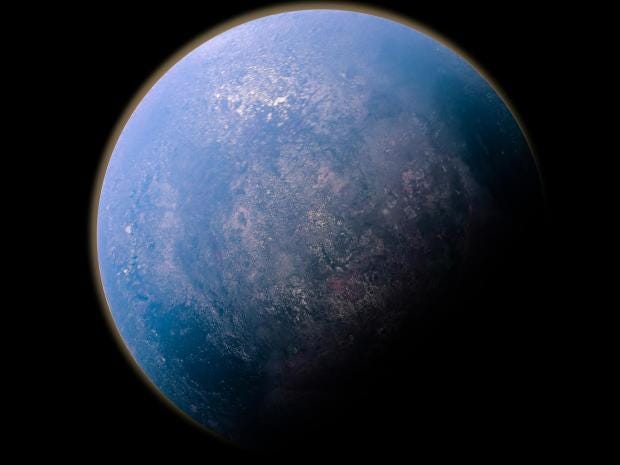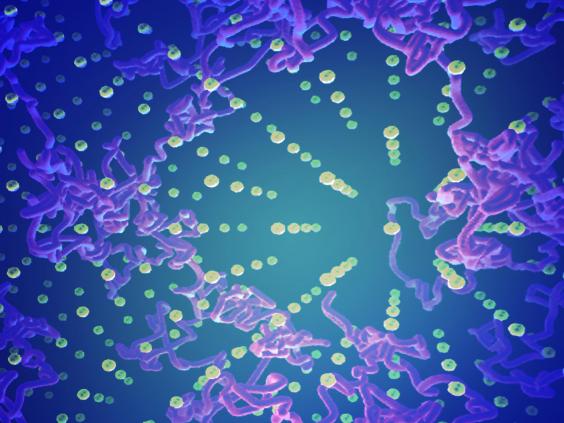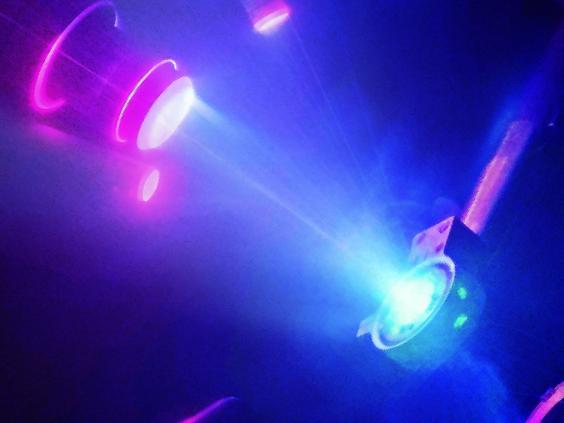Scientists have created a “strange” new form of water that behaves like a cross between a liquid and a solid. The substance, known as “superionic water ice”, is thought to be a key component in the structure of distant planets in our solar system. Researchers had predicted the existence of such a substance as far back as 1988, and while numerical simulations appeared to prove its existence, these are the first experiments to confirm those findings.

“These are very challenging experiments, so it was really exciting to see that we could learn so much from the data,” said Dr Marius Millot, a physicist at Lawrence Livermore National Laboratory in California, who led the study. “Especially since we spent about two years making the measurements and two more years developing the methods to analyse the data.”

Depiction of the movement of hydrogen ions (pink) within the solid crystal lattice of oxygen ions within superionic water ice (S Hamel/M Millot/J Wickboldt/LLNL/NIF)
The scientists used a technique called “laser-driven shock compression” to not only confirm the existence of the substance, but also verify predictions about the composition of planets like Neptune and Uranus.
“Our work provides experimental evidence for superionic ice and shows that these predictions were not due to artefacts in the simulations, but actually captured the extraordinary behaviour of water at those conditions,” said Dr Millot.
The research was published in the journal Nature Physics. While normal ice consists of water molecules linked up to form a solid, superionic water ice is made up of ions – atoms that carry positive or negative charges. Specifically, its structure consists of hydrogen ions flowing through a solid crystal made from oxygen ions.

Laser-driven shock compression experiment to recreate planetary interior conditions and study the properties of superionic water ice (M Millot/E Kowaluk/J Wickboldt/LLNL/LLE/NIF)
“That’s a really strange state of matter,” Dr Millot told the New York Times.
Unlike conventional ice, the superionic variety requires incredibly high temperatures to form, as well as high pressures. The research team achieved this by crushing ice between two diamonds, before firing a laser at it to further increase the pressure and heat. At nearly 5,000C and two times atmospheric pressure, the scientists saw evidence a superionic water ice had formed and then melted. In total, the whole experiment only took between 10 and 20 nanoseconds. The next step, according to the scientists, is to determine the structure of the oxygen crystals found in superionic water ice.
Though superionic water ice is not found anywhere on Earth, it may be present in large quantities inside Uranus and Neptune, where the high temperatures and pressures are similar to those created by Dr Millot and his team in their experiments. Some scientists have suggested the presence of this matter inside these distant planets may explain their unusual magnetic fields.
“Magnetic fields provide crucial information about the interiors and evolution of planets, so it is gratifying that our experiments can test – and in fact, support – the thin-dynamo idea that had been proposed for explaining the truly strange magnetic fields of Uranus and Neptune,” said Professor Raymond Jeanloz, a co-author of the paper based at the University of California, Berkeley. “It’s also mind-boggling that frozen water ice is present at thousands of degrees inside these planets, but that’s what the experiments show.”
